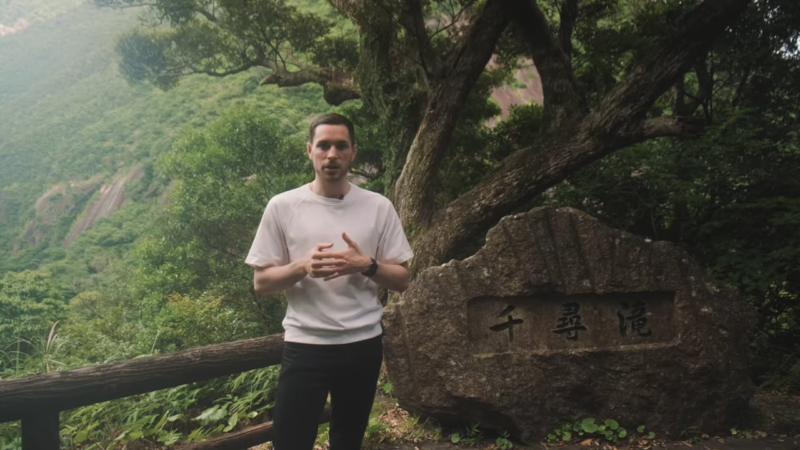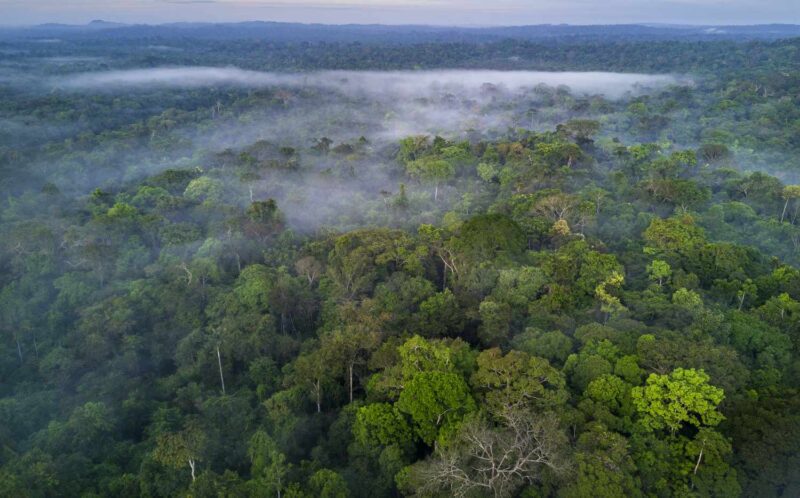Forests are some of the coolest places on Earth. They give us fresh air, are home to tons of different species, and have stunning views. Whether you love nature or are just curious, there’s something incredible to learn about these green giants. Let’s check out the top 10 largest forests in the world and see what makes each one so special.
10. Yakushima

Location: Kagoshima Prefecture, Kyushu, Japan
Area: 540.98 sq. km
Imagine stepping into a forest straight out of a fantasy novel—welcome to Yakushima in Kagoshima Prefecture, Kyushu. This UNESCO-recognized gem covers about 540.98 square kilometers and is famous for its ancient cedar trees, some over a thousand years old!
The rugged mountains and unique climate create a perfect home for a mix of diverse plants and animals. Being part of the Ōsumi Islands, it also includes some stunning surrounding waters. It’s like nature’s playground waiting to be explored.
9. Bialowieza
Location: Poland and Belarus
Area: 1,418.85 sq. km
Bialowieza Forest, straddling the border between Poland and Belarus, is a UNESCO World Heritage Site covering about 1,418.85 square kilometers. It is one of the last and largest remaining parts of the primeval forest that once stretched across the European Plain.
The forest is home to around 800 European bison, the continent’s heaviest land animals. It also shelters a diverse range of species, including the hazel grouse and three-toed woodpecker.
8. Daintree
Location: Queensland, Australia
Area: 1,200 sq. km
Ever wanted to see a living museum? Head over to the Daintree Rainforest in Queensland, Australia. Covering around 1,200 square kilometers, it’s a biodiversity hotspot with over 130 species of reptiles and 920 species of trees.
One of its highlights is Mossman Gorge, where you can find stunning waterfalls, mountain ranges, and lagoons. It’s like stepping into a world that has remained unchanged for millions of years.
7. Black
Location: Southwest Germany
Area: 6,009 sq. km
The Black Forest in Southwest Germany is like walking through a storybook. This forest, covering about 6,009 square kilometers, gets its name from the dense, dark green conifer trees that make it look almost magical. It’s a place filled with folklore, charming traditional farmhouses, Black Forest ham, and even tales of gnomes.
Don’t miss the serene lakes and valleys, with Feldberg Mountain towering at 1,493 meters. Fir and pine trees dominate this scenic area, creating an enchanting landscape you won’t forget.
6. Great Bear Rainforest
Location: British Columbia, Canada
Area: 64,000 sq. km
The Great Bear Rainforest in British Columbia, Canada, is a jaw-dropping natural wonder spanning about 64,000 square kilometers. This place is a wildlife paradise, home to some incredible creatures like the rare white Kermode bear, often called the “Spirit Bear,” and, of course, the mighty grizzly bear.
Imagine walking through a forest filled with towering western red cedar, Douglas fir, western hemlock, and Sitka spruce. The climate here is pretty diverse, with summer temperatures around 17°C and winter dipping to about -2°C, creating a perfect mix for a variety of plants and animals.
5. Tongass National Forest
Location: Southeast Alaska
Area: 68,000 sq. km
Heading up to Southeast Alaska, you’ll find the Tongass National Forest, which covers a whopping 68,000 square kilometers. It’s the biggest national forest in the U.S.! Nearly 40% of this area is made up of ice, water, muskeg, and rock. This forest isn’t just about the scenery; it’s also home to the Tlingit, Haida, and Tsimshian peoples.
The dense canopy here is a mix of red cedar, yellow cedar, and mountain hemlock. And if you’re into fishing, you’ll love that Tongass is known as “America’s Salmon Forest” because of its rich salmon habitats.
4. Taiga/Boreal
Location: Canada and Russia
Area: 1.7 Million sq. km
Now, let’s talk about the Taiga, also known as the Boreal Forest, stretching across Canada and Russia. This vast forest covers around 1.7 million square kilometers, making it one of the largest biomes on Earth. This forest has been around for about 12,000 years and is a haven for wildlife like bears, wolves, moose, and lynx.
The winters here are pretty brutal, but that’s part of what makes this place so uniquely beautiful and resilient. Imagine the quiet and stillness of a snow-covered forest, with only the tracks of wildlife breaking the pristine blanket of snow.
3. Valdivian Temperate Rainforest
Location: Chile and Argentina
Area: 2,481,000 sq. km
Imagine a forest that stretches across Chile and Argentina, full of life and color, even in the cold, wet weather. That’s the Valdivian Temperate Rainforest for you! Covering about 2.481 million square kilometers, this place is a haven for endangered species like the adorable pudu deer and the elusive South American tapir.
Picture snow-capped mountains, pristine rivers, and serene lakes—it’s like stepping into a postcard.
2. Congo
Location: Central Africa
Area: 3.4 Million sq. km
The Congo Rainforest, often referred to as the “Lungs of the Planet,” is the second largest tropical rainforest in the world. It spans six countries in Central Africa and covers around 3.4 million square kilometers. This lush forest is a biodiversity hotspot with about 10,000 plant species, many of which are endemic.
The Congo is also the last refuge for endangered species like the mountain gorilla. Its rich ecosystem plays a crucial role in regulating the global climate and is a critical carbon sink.
1. Amazon Rainforest
Location: South America (Brazil, Venezuela, Colombia, etc.)
Area: 5.5 Million sq. km
The Amazon Rainforest is the largest forest in the world, spanning across nine countries in South America. It covers approximately 5.5 million square kilometers, making it a titan of the natural world. This vast expanse is home to 390 billion trees and around 16,000 species of plants, making it one of the most biodiverse places on Earth.
The Amazon is a haven for unique wildlife such as jaguars, anacondas, and harpy eagles. Additionally, it supports numerous indigenous tribes who have lived in harmony with nature for centuries. The Amazon River, one of the longest and most voluminous rivers in the world, weaves through this green paradise, further enriching its ecosystem.
In summary
Forests provide us with so many things we often overlook. We all have a part to play in keeping them around.

